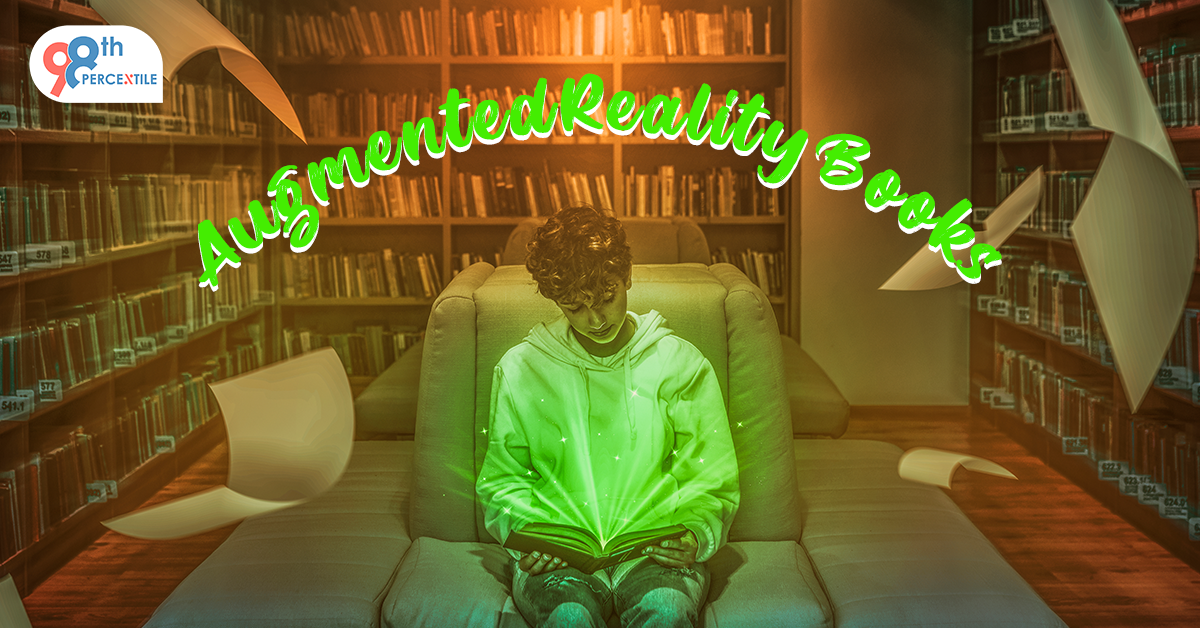In a world increasingly dominated by screens and digital devices, the traditional allure of printed books may seem to be fading. However, there's an exciting and innovative trend that's breathing new life into the world of literature, particularly for young readers – augmented reality (AR) books. These AR-enhanced books are redefining storytelling by merging the physical and digital worlds, providing an immersive and captivating reading experience that encourages young minds to explore, learn, and dream.

The Magic of Augmented Reality Books Augmented reality books are regular printed books that come to life when viewed through the lens of a smartphone or tablet. The pages of these books are filled with illustrations and content that, when scanned with an AR app, transform into interactive 3D objects, animations, videos, and even games. It's as if the characters and scenes from the book leap from the pages into the real world, making the story a truly immersive experience. Engaging the Senses One of the most striking features of AR books is how they engage the senses.
Traditional books captivate readers through words and static images. Augmented reality, however, enriches the reading experience by appealing to both visual and auditory senses. It's a multi-sensory experience that makes stories more vivid, memorable, and emotionally engaging. Consider a children's book that tells a story about dinosaurs. With augmented reality, a child can see a 3D T-Rex towering over the page, hear its roar, and even interact with it by feeding it virtual food or making it perform tricks. This sensory immersion helps kids understand and remember concepts in a way that traditional books can't achieve.
Fostering Imagination and Creativity - AR books stimulate the imagination in unique ways. They encourage young readers to explore and play within the story's universe. The interactive nature of AR books invites kids to be co-creators of the narrative, making choices and decisions that affect the outcome. This not only enhances reading comprehension but also fosters creativity and critical thinking.
Educational Value - The integration of augmented reality into books offers a wealth of educational opportunities. AR can be used to explain complex concepts in an engaging and accessible manner. For instance, a geography book could use AR to bring maps to life, allowing young readers to explore countries, landmarks, and cultures through 3D models and interactive content. This can make learning fun and effective, encouraging kids to delve deeper into various subjects.
Accessibility and Inclusivity - Augmented reality books are also making strides in promoting inclusivity in literature. They offer features like text-to-speech, sign language interpretation, and customizable text sizes, making it easier for children with different abilities to access and enjoy the content. This not only broadens the audience but also teaches all readers the value of inclusivity and diversity.
The Role of Parents and Educators Parents and educators - It plays a crucial role in helping young readers make the most of augmented reality books. They can guide children in using AR apps and teach them how to navigate the digital world safely. Additionally, they can facilitate discussions about the content, encouraging kids to think critically and ask questions about the stories and the interactive elements. Popular Augmented Reality Books for Young Readers Several augmented reality books have gained popularity among young readers.
Let's explore a few examples to get a sense of how this technology is transforming the reading experience:
"The Very Hungry Caterpillar" by Eric Carle This classic children's book has been given an AR makeover. As kids read the story of the hungry caterpillar's transformation into a beautiful butterfly, they can witness the caterpillar crawling around the page, munching on leaves, and ultimately undergoing its magical metamorphosis. "Quiver" Coloring Books Quiver offers a range of coloring books that, when augmented through the Quiver app, turn into interactive 3D animations.
Children can bring their own coloring creations to life, watching them dance and move on the page. "The Little Mermaid" by PopAR Books PopAR Books offers a unique twist on the classic fairy tale of "The Little Mermaid." By scanning the pages with an app, readers can watch the underwater world come to life, complete with mermaids, fish, and other aquatic creatures. "Osmo - Detective Agency" Osmo's "Detective Agency" is a series of interactive books that challenge young readers to solve mysteries by examining the pages through a special Osmo device. This hands-on experience encourages critical thinking and problem-solving. "Wonderscope" Wonderscope takes AR books to the next level. It's not just about reading; it's about being part of the story.
Kids can step into the pages and interact with characters, helping to drive the narrative forward. Challenges and Considerations While augmented reality books offer numerous benefits, they also come with some challenges and considerations: Screen Time: The use of AR books involves screen time, which should be monitored to ensure a healthy balance with other activities.
Cost: Some AR books require specific apps or devices, which can add to the overall cost. Privacy and Safety: Parents and educators must consider privacy and safety concerns when using AR apps and devices. Content Quality: The quality of AR books and apps can vary, so it's essential to choose those with educational and age-appropriate content. The Future of Augmented Reality Books As technology continues to evolve, so too will augmented reality books.
We can expect to see even more interactive and immersive experiences, a wider range of subjects and genres, and enhanced accessibility features. The possibilities are endless, and the future of AR books is bright.
Related Articles:
1) Why Python Programming Is Perfect For Your Kid
2) Simple Ways To Teach Your Kids Coding
3) Coding: A Creative Language for Kids
4) 4 Ways a Code Academy Can Change Your Child’s Future

 Students/Staff
Students/Staff Parents
Parents ElevatEd
ElevatEd


-Nov-18-2025-03-57-47-3267-AM.png?width=360&length=360&name=401x226%20(6)-Nov-18-2025-03-57-47-3267-AM.png)



-Jul-22-2025-03-16-52-8797-AM.png?width=360&length=360&name=401x226%20(6)-Jul-22-2025-03-16-52-8797-AM.png)






